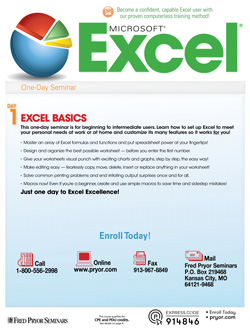You've spent a great deal of time and effort to find the right candidate for the open position in your organization. How do you ensure that your new employee starts off on the right foot?
The first few days at a new job can be intimidating and overwhelming. The organization has an important responsibility to both meet the expectations of new hires and to communicate what is expected, how processes work and who can provide information and answer questions.
As a manager, supervisor or HR professional, you are responsible for reflecting on the "human" aspects of orientation, rather than simply outlining the job tasks, processes and procedures that every new hire must learn. Regardless of experience level, all new employees have concerns and reservations when entering a new role, and it's just as important for the organization as it is for the employee that orientation is a positive, productive experience for everyone involved.
Don't spend another minute worrying if your employee orientation process is the best it can be. Learn tips, techniques and strategies for addressing the six things new staff members need to transition smoothly into a new job:
- Clear communication that concisely outlines expectations
- A meaningful, organized welcome
- Organized, systematic and prioritized instruction for the paperwork overload
- Immediate opportunities for contribution and success
- Definitive sense of direction for the position
- Understanding of the organization's culture and a sense of community
Enroll today for this insightful one-hour webinar to learn practical, creative and successful techniques for orienting employees to a new job, surroundings, department or organization.

You've spent a great deal of time and effort to find the right candidate for the open position in your organization. How do you ensure that your new employee starts off on the right foot? The first few days at a new job can be intimidating and overwhelming. The organization has an important responsibility to both meet the expectations of new hires and to communicate what is expected, how processes work and who can provide information and answer questions. As a manager, supervisor or HR professional, you are responsible for reflecting on the "human" aspects of orientation, rather than simply outlining the job tasks, processes and procedures that every new hire must learn. Regardless of experience level, all new employees have concerns and reservations when entering a new role, and it's just as important for the organization as it is for the employee that orientation is a positive, productive experience for everyone involved.
- The five "first week" new employee turn-offs: messages we inadvertently send that sets a negative tone for the future
- The "6-by-6" method of orientation: a quick sure-fire strategy for ensuring every employee gets an optimal start — no matter how pressed for time you might be!
- Twelve unique ways to welcome employees and encourage a sense of team unity from the start
- Guidelines for well-paced, proactive training that fits the learning needs of every employee
- Signs of new-recruit stress and how to alleviate it quickly
- The "TSL" method of coaching: a technique for recognizing an employee's ability and understanding of new procedures and processes
- How to best incorporate new employee paperwork and procedural must-haves into the overall orientation process
- Five ways to get current staff members to contribute to the success of the newest team member
- Three statements that make all the difference to individuals during orientation
- And much more!
HR management and staff, managers, supervisors, team leaders and anyone who may play a formal or informal role in providing employee orientation training to new hires and new starts.


